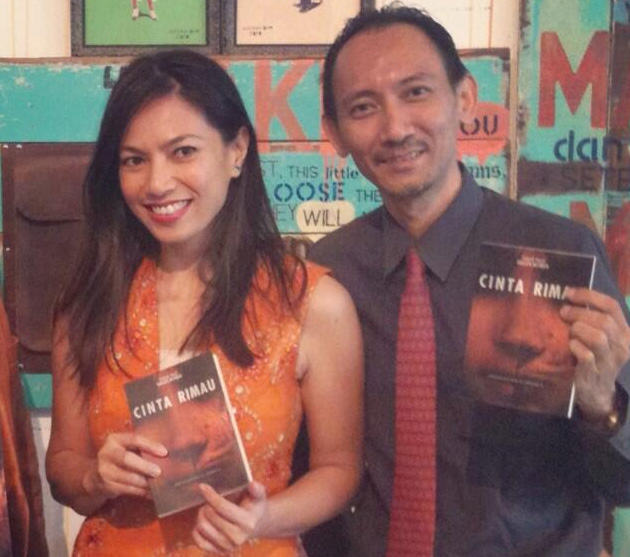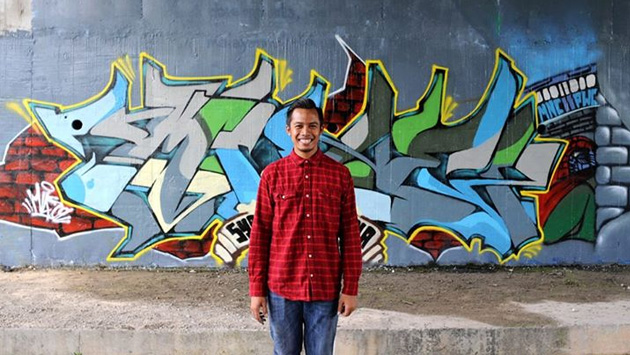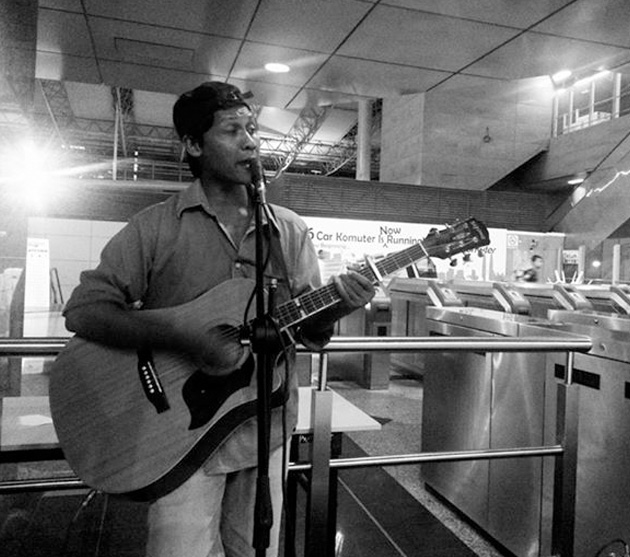Local artists are important as they play a large part in tourism and do much to promote the Malaysian culture.
However, Malaysia is not short of such talent. In addition to the mainstream ones, there is another pool of talent which should deserve the same amount of attention -- the independent (indie) artists.
Without realising it, the number of indie artists in the country are probably higher than mainstream artists themselves.
The indie art scene in the homeland is not something new, and over the years, the acceptance of indie artists has changed into a more positive direction.
Three indie artists specialising in different areas spoke to Astro AWANI recently to relate the challenges that behold them.
For these group of talent, they don't desire financial contributions as much as the space, recognition and appreciation for what they do.
'Help to promote reading culture' - Indie book publisher
Merpati Jingga is a local indie book publishing company. Established since 2011, it has published more than 20 books by alternative writers to date.
Merpati Jingga managing director, Faisal Mustaffa, created the book publishing company to provide opportunities for writers who have ideas that might not be suitable to be published in the mainstream media.
"The objective of Merpati Jingga is to give an opportunity for the writers out there who have a story, but is not suitable to be published in the mainstream, so we help to turn their ideas into reality," he said.
Among the books that have been published by Merpati JIngga include "Bogel Menuju Tuhan" by Zahiril Adzim, "Twitter Stories" by Ajami Hashim and "Homeless by Choice" by Mislina Mustaffa.

Faisal with Haliza Misbun during the launch of 'Cinta Rimau', a book written by the latter - Merpati Jingga Twitter photo
Faisal admitted Merpati Jingga is best remained and known as an indie book publisher as he did not want to be burdened by assistance from parties with vested interests."We are financially independent because we don't want to be constrained by grants or ‘special stakeholder’ funds," he said.
He said he is not expecting to get anything from Budget 2015, but he hopes that the government will be more extensively involved in helping indie book publishers like him.
"I want to see the government participate more in campaigns to promote reading culture and also organise forums on the contents of a book," said Faisal, who stressed that Merpati Jingga is not profit driven.
"The returns are important but are not intended to get rich, just enough to survive for other projects. What's important is the freedom of expression and to ensure there's no wastage.
"What worries me is the implementation of GST, which will increase the cost and reduce the purchase. I hope book publishers like myself will be exempted from the GST," said Faisal who usually allocates a RM5,000 capital to publish one book.
The capital covers the costs of the book launch and an initial contribution to the author.
'Just want art to be appreciated' - Grafitti artist
Despite just being 27 years old, Muhammad Fakhrul Akmal has been involved in the graffiti art scene since 2000.
Known as "Mile09", the name he signs on each of his work, Muhammad Fakhrul said it was a milestone when he was finally able to make his passion his profession.
When speaking of graffiti, it is common for one to relate it to vandalism as how it was perceived in the past, but now, many more opportunities are given to street artists like Muhammad Fakhrul to 'spray' their art work.
"Among the biggest projects that I've done is for Petronas and Red Bull. Recently, I've also received an offer by the Agriculture and Agro based Industry Ministry to paint graffiti for MAHA (Malaysia Agriculture, Horticulture and Agrotourism Show)," he said.

Muhammad Fakhrul with one of his artwork in Dengkil, Selangor – Mile09 Facebook photo
However, like Faisal, Muhammad Fakhrul said making profit is not the main objective for underground grafitti artists.
"I don't pursue the quantities of projects; what's important is that the work is appreciated.
"Appreciation for one's graffiti art is just not there. People generally view it as some random paint smears onc walls instead of appreciating the aesthetics behind the artwork.
"Most people don't know that becoming graffiti artists requires a huge capital, especially in purchasing spray paints which are mostly imported, to ensure the paint coatings are of the best quality," said the father-of-one, whose spray paints mostly come from Australia and Germany.
When asked about his expectations from Budget 2015, he said he doesn't necessarily believe in government support.
In relating his experiece, he said once he and several of his comrades were given the opportunity to paint their art at the National Art Gallery, but was devastated when their hard work was painted over after only six months.
"In some countries, the artistic value of a grafitti is left to be appreciated for over 10 years! Closer to home, the Pudu Prison murals were once something the nation was so proud of. Look at what happened to it now?" said Muhammad Fakhrul.
'It's not begging but a career choice' - Busker
Buskers or street musicians are no longer something alien to the community, in fact it has been engrained in modern society as a 'pop culture' phenomenon.
For Meor Yusof Aziddin, 47, who has been busking since 1984, said the public's acceptance of buskers are much different than before.
"Street musicians used to be associated with the likes of beggars where being a busker is actually a career choice," said the professional busker who has been playing his music at KL Sentral since 2010 under the management of Keretapi Tanah Melayu Berhad (KTMB).
Meor Yusof was also grateful for the support by the local authorities and the Malaysian Buskers Club (MYBC) for organising busking activities in each state throughout the year in conjunction with Visit Malaysia Year (VMY) 2014.
He said among the many initiatives made to develop and popularise busking, is the Langkawi Buskers Festival (LBF), where he had been involved for two years now with more than 150 other buskers.
LBF is organised by MYBC with the cooperation and support of the Langkawi Development Authority, the Housing and Local Government Ministry, the VMY 2014 Secretariat, the Kedah state government and the National Drugs Agency (AADK).

Meor Yusof busking at KL Sentral – Meor Yusof Aziddin Facebook photo
The father-of-four said buskers generally don't seek profit but opportunities to be heard.
"Now, it is easier. City Hall has provided many opportunities for us to showcase our music on the streets. Besides providing permits for busking, we are also often invited to partake in their programmes to entertain people 'live' from morning to evening," said Meor Yusof, who has produced 10 indie albums since 2000.
The Perakian also commended Kakiseni for organising a programme called 'Busktop', where seasoned and new street musicians are invited to play since last February around Pavilion Kuala Lumpur and Farenheit 88 in the city centre.
Meor Yusof hoped Malaysians will be more aware of the value of the art and creativity behind busking, and provide space for these artists to express.







